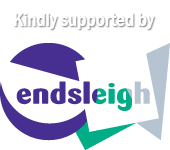Artography: An Inspiration Map
artography.suarts.org
Background
Our University has some of the least satisfied students at any University – we were last three years in a row. We have traditionally low levels of involvement in our Union – only 450 people voted and there were 600 society members out of nearly 20,000 students in 2009. The journey we have gone on since then is incredible, but students tell us that studying at UAL is lonely and not creative. Our research in 2011 told us that we needed to do more to develop communities of students and led to £50k new funding from the University for two new community organisers.
The challenge:
University of the Arts London is Europe’s largest arts institution, with 6 colleges across 15 sites, hundreds of disciplines and courses and thousands of students and staff. Due to this unique spread across London, fostering a sense of community, like any London based university, can be quite a difficult task.
London plays a very important part in the lives of students studying at UAL. A huge amount of London based students’ time is spent travelling across the capital to lectures or to workshops, to meet friends or visit exhibitions, or any of the amazing things London has to offer.
The Research
Working as a staff team across two unions, we can quickly understand what makes our students unique. The students at UAL were more likely to ‘like’ pictures on Facebook, follow us on Instagram, have a Tumblr account, search for ‘What’s On’ content on our website (18% of all visits) and click on community based segmented content in our emails.
This project has been evidenced based from start to finish – all shaped by our understanding that 70% of traffic comes from OSX/iOS users, that 75% use Chrome/Safari, and that there was a digital solution to position us as integral to a creative life in London.
To try and bring students at UAL together and encourage a sense of community, we wanted to take on a project that would fulfill a range of aims in a way that would be appealing to arts students:
- Aesthetically pleasing
- Encourages sharing and discovery
- Based around place (ie. London)
- Helps build community
- Use the creativity of our students to crowdsource amazing content
We discussed a range of options, from manually adding every student on tumblr to a global group to heavier segmentation of our email contentbut it was clear that a more visual representation of creativity in London better delivers our objectives.
We knew students uploaded images to digitial platforms, that they wanted a digital space to know what other UAL students were up to and we were positioned to offer a solution.
How the project combines creativity with technology:
The map is a perfect synergy of creativity and technology. While it is creative in its own right through the minimalist design, it is the inspirational content provided by the students using the map that really demonstrate how creative it is possible to be just through an iPhone camera!
Students at UAL are some of the most creative inhabitants of London and many have successful creative careers. Our map is providing a technological platform for the creativity of our students. The anonymity of the points on the map means users can be as creative as they like without any pressure.
How the map is having a positive impact:
While there are many places to find out about London, there are very few student specific sites to access this information, and certainly no real precedent for a creative map of London. The fact that the map is aimed at our members gives a sense of ownership – this is their London.
The map has already started to help students discover interesting things in London and, more importantly, offered a collaborative creative space to share work rooted firmly in the city where they study. As points are added to the map, we can see clusters of points appearing around the UAL colleges which will definitely help foster a sense of community around those hubs as the map progresses.
Tech based competencies displayed in the project:
The map was completely designed and developed in house at SUARTS, and was the result of a collaborative effort across many teams in the union.
The map is based around Google Maps API v3, and uses several tricks within the API such as limiting panning and zoom, and customized styles. Javascript and JQuery are used for animating various elements of the page and client-side validation of the upload form, and PHP/SQL are used for importing/exporting data from the database.
The map works as follows:
- User enters content into form
- User clicks ‘submit’ and the page does client side validation with Javascript and then runs a php file
- PHP file resizes images above 1000px wide, saves images to the server and adds info to database
- User is taken to a page registering receipt of the info and then redirected back to the map
- As the map loads it runs another php script which dynamically loads the data from the database and creates a KML (Keyhole Markup Language) file.
- The Google Maps API takes this KML data and populates the map using the coordinates associated with each point on the map
- The user can then click on any of the points and view the corresponding info
We’re excited about developing the map as a platform for students to share content – this is only version 1.1! Future specifications will include:
- Full support for mobile devices (currently it is functional on all devices but has difficulty on some browsers)
- Sharing capability for individual points on the map
- Integration with Instagram so users can upload photos directly from their uploaded photos
- Search functionality
- Clustering groups of points
What has been developed is extraordinary and is designed to meet a need for our students.


